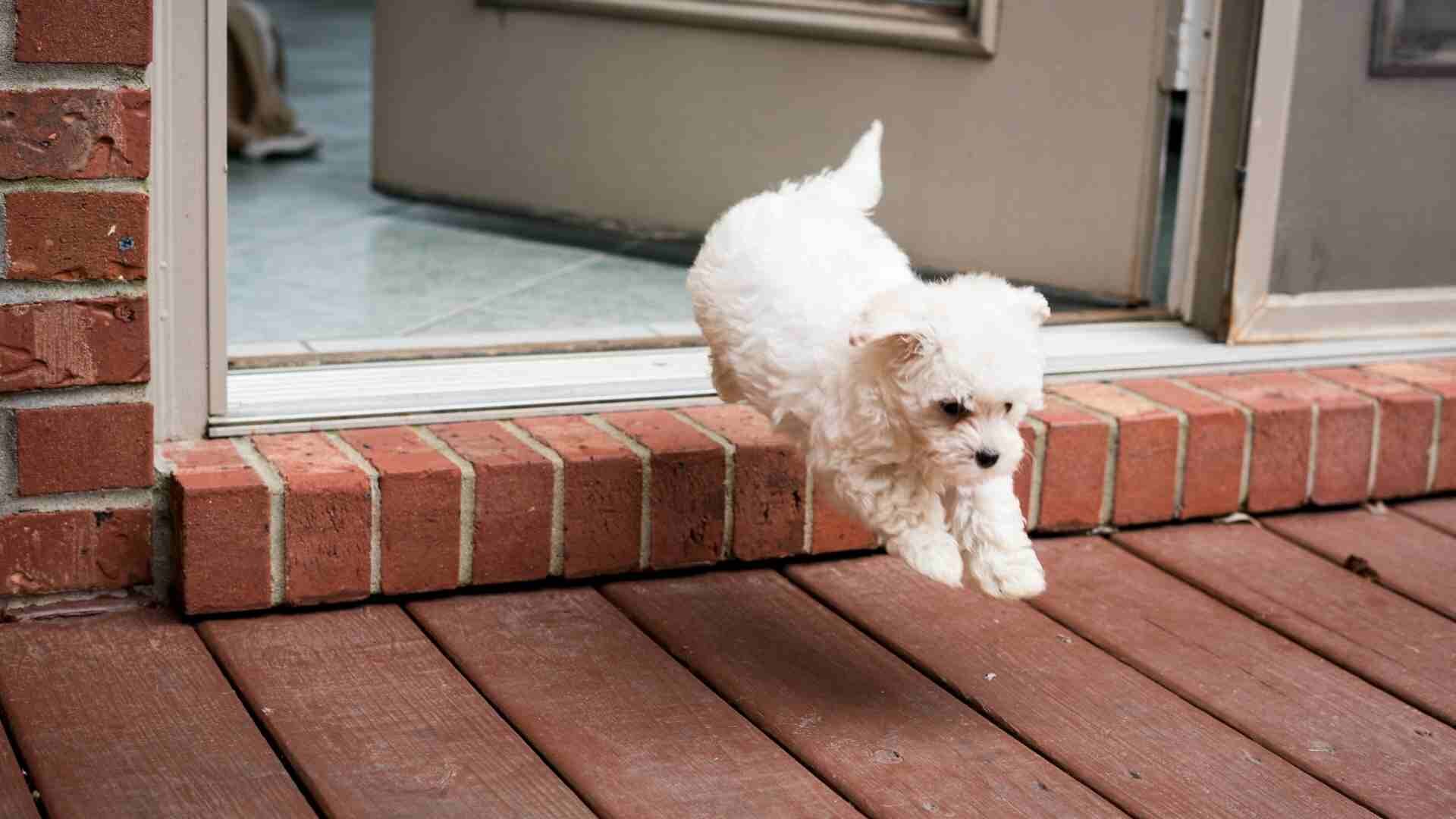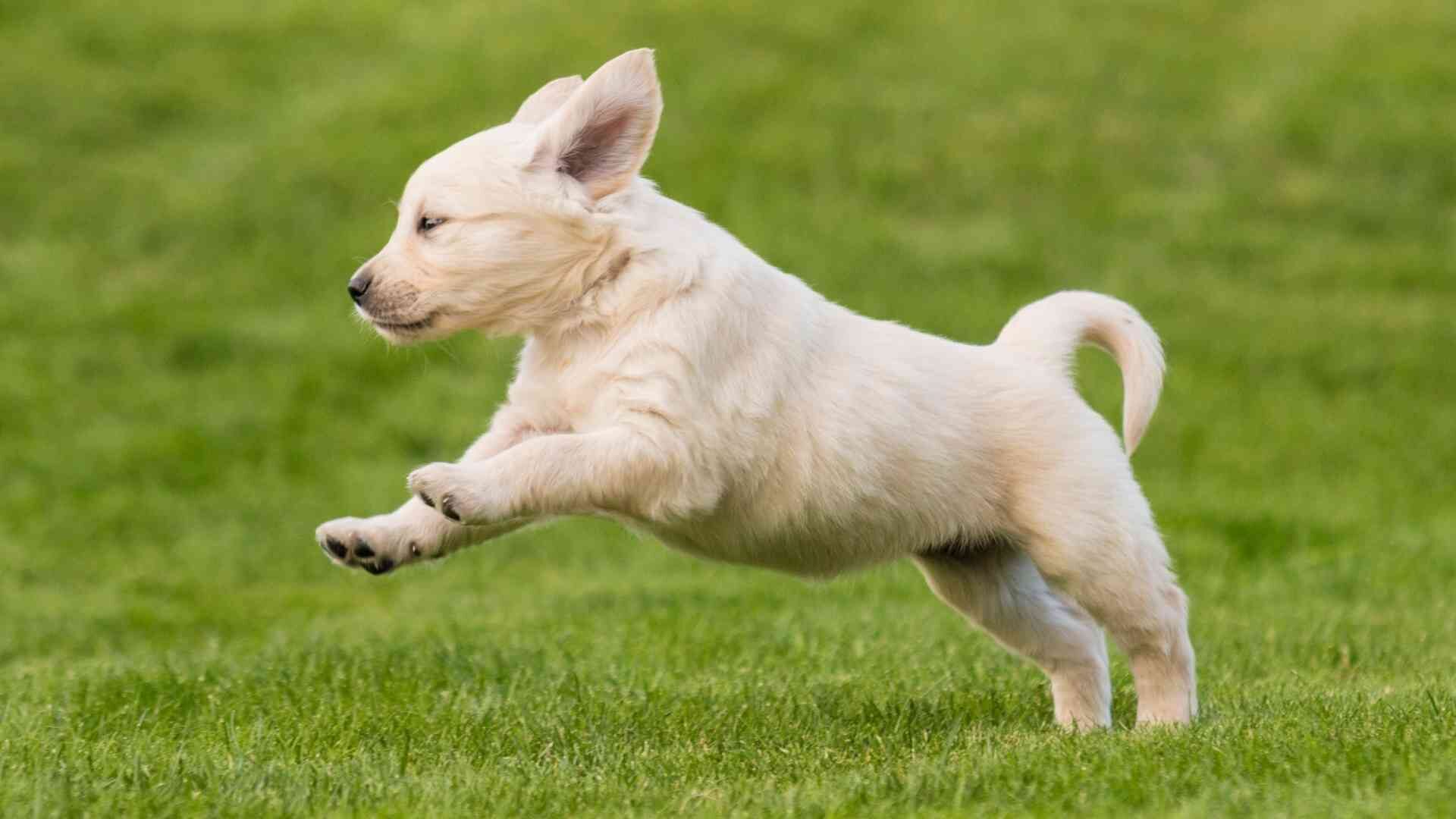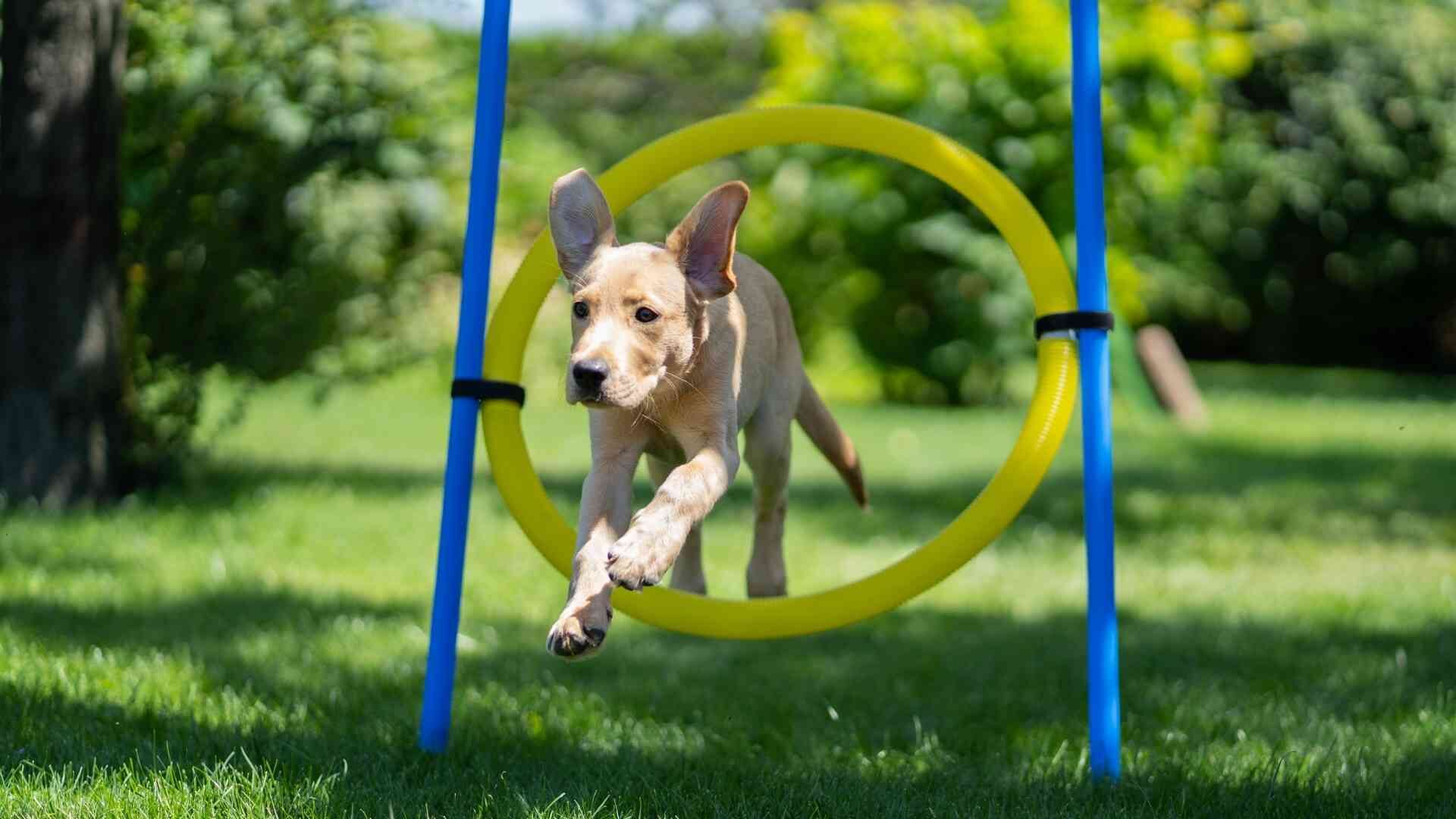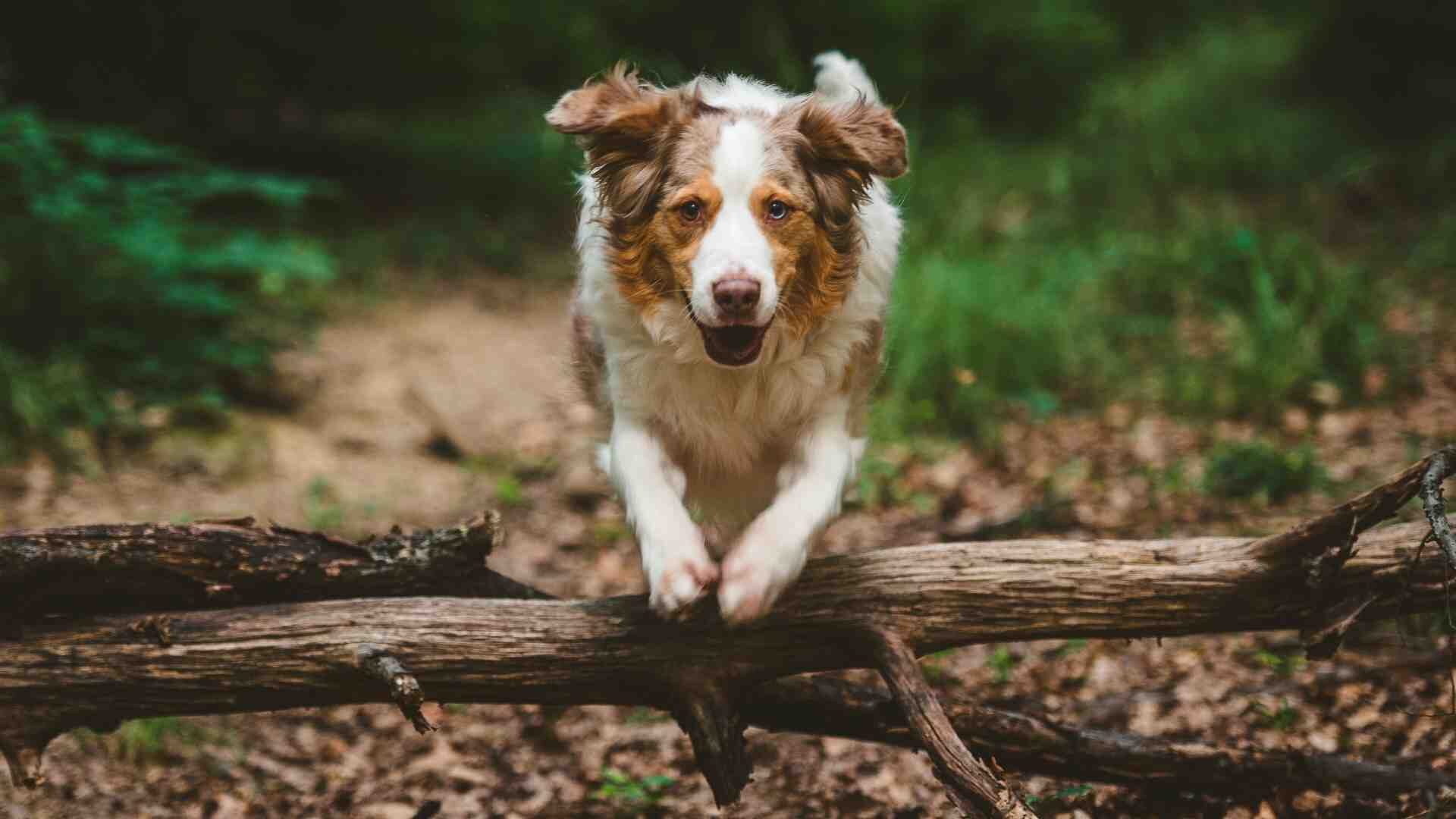Have you noticed that your dog no longer jumps on you when you come home, or that he is hesitant to jump up on the bed or sofa?
There could be a variety of reasons for this. Fortunately, we’ve got you covered with all the information you need to understand why your dog is afraid to jump up and down.
Simply keep reading.
Then you may be wondering what’s going on and whether or not your dog is sick.
Why hasn’t my puppy ever jumped?

If your puppy has never attempted to jump, it is possible that he either doesn’t know how to jump or will be uncomfortable if he tries. Hip dysplasia or luxating patellas can cause discomfort and cause a dog to avoid jumping.
Or he could have had a traumatic experience while jumping.
For example, if your puppy has been seriously injured in a fall, it may be hesitant to jump on the bed or sofa because it brings back bad memories.
This is the most innocuous of the reasons why your puppy won’t jump.
However, before you conclude that your dog is simply afraid to jump down, you should have him examined.
Because injury, disease, and pain are the most common causes of your dog’s refusal to jump, you should not dismiss this symptom.
Don’t just assume it’s old age. It could be a variety of things, some of which are very treatable if caught early.
Why can’t my dog jump up on the couch?
If your dog is suddenly afraid of getting on and off furniture, there’s a good reason for it. When a behavior stops, it is often because an unpleasant consequence has deterred it. Fortunately, with your gentle guidance, negative consequences can be turned into positive ones, allowing your dog to enjoy climbing on furniture once more.
Jumping off furniture is a dangerous leap for small dogs and puppies. If you have an older dog who no longer wants to jump on or off sofas or chairs, this could indicate the onset of arthritis, intervertebral disc disease, back pain or injury, and muscle weakness, as seen in Addison’s Disease.
It may be a terrifying experience to your dog
Aside from pain, a frightening experience can have a negative impact. Your dog may have jumped off the furniture and landed on a slick, wet floor, causing him to panic due to the unsteadiness of his feet.
He could have fallen or landed awkwardly. If your dog was chastised for jumping on the couch or was startled by a noise while getting on or off furniture, he may have become scared. Dogs learn through associations, whether they are positive or negative.
Why has your dog stopped jumping?
Most dogs enjoy jumping and use it to express their emotions, establish dominance, and burn off some of their boundless energy.

Most of the time, you must teach your dog not to jump on furniture or people.
So, if your dog refuses to jump or appears hesitant to get off the bed/couch, you have reason to be concerned.
1. Injury
An injury is one of the most likely causes of your dog’s inability to jump. While dogs enjoy performing daring stunts, they are not always graceful and may land badly and injure themselves.
Trauma to the back, back legs, muscles, and hips can make moving, stretching, and jumping painful. If your dog is in pain, you will notice that he or she will not jump and will shake.
Depending on the severity of the injury, patting your dog around the injury site may result in yelping, growling, and crying.
Some breeds are more vulnerable to injury than others. I’m referring to toy breeds like Yorkies, Chihuahuas, and Pomeranians. They can injure themselves by jumping off your arms or falling off a bed. So, if your Yorkie is unable to jump, you should take them to the vet. Because trauma is one of the leading causes of death in toy breeds, you must act quickly.
2. Arthritis
Arthritis is another reason your dog won’t jump up. It’s a common condition in older dogs that causes pain when they move.
In healthy dogs, cartilages play an important role in cushioning the joints. They keep the bones from rubbing against each other and allow them to glide smoothly.
Unfortunately, cartilages degrade with age, repeated stress, injury, or disease. This causes joint inflammation, as well as:
- Stiffness and lameness
- Unwillingness to jump or run
- When touched, there is pain.
- Lethargy
- Gaining weight
Labradors, German Shepherds, and Golden Retrievers are more prone to arthritis than other breeds. If you notice that your old dog is no longer able to jump on the bed, consult your veterinarian.
Are you wondering why your dog no longer jumps on you when you come home or is hesitant to jump up on the bed? Discover 8 possible reasons why!
3. IVDD
Back problems can impair your dog’s ability to jump and move. A slipped disc, also known as intervertebral disc disease, is one of the most common back conditions in dogs.
Your dog’s spine has to cushion discs between the vertebrae (bones) that are meant to protect one of the most vulnerable parts – the spine. These discs can degenerate and burst/bulge. When this happens, they put pressure on the spinal cord and nerves.
Pain, nerve damage, and paralysis are the end results.
Other symptoms of IVDD include:
- Unusual walking
- Lameness
- Back hunched
- Decreased appetite
German Shepherds, Dachshunds, Shih Tzus, and Basset Hounds are breeds that are prone to slipped discs. If your adult German Shepherd refuses to jump on the bed, have them examined as soon as possible.
4. Hip dysplasia
Hip dysplasia is so common in dogs that it’s difficult to find breeds that don’t have it. While it is more common in large and giant dogs, it can also affect small dogs.
So, what exactly is hip dysplasia? Consider the hip joints to be a ball and socket that slide smoothly when your dog walks. Because the ball and socket do not fit or have not developed properly in hip dysplasia, they grind and rub.
The following are common symptoms of hip dysplasia:
- Reduced activity and range of motion
- unwillingness to jump, run, or play
- Unwillingness to climb stairs
- Atypical gait
- Stiffness and pain
Hip dysplasia is caused by excessive growth, poor nutrition, and being overweight.
5. Tick-borne disease
I’m sure you’ve had to remove ticks from your dog at some point in your life. Ticks feed on blood and carry a variety of diseases, which they can pass on to your dog if you do not take tick prevention measures. While lameness and difficulty walking are the last symptoms that come to mind, they can be caused by ticks. Lyme disease, for example, can cause swollen and painful joints, limping, and lameness.
Anaplasmosis exhibits similar symptoms, including low blood palettes. Joint pain and fever are also symptoms of Rocky Mountain spotted fever.
So, if you recently removed a tick from your dog and notice that he or she is unable to jump, you should have them tested for tick-borne diseases.
6. Weakness in the rear legs
Another reason your dog no longer jumps is rear leg weakness. Unfortunately, it can be caused by a variety of conditions, some of which are genetic, such as degenerative myelopathy (a disease of the spinal cord).
Injury or trauma can weaken the back muscles, making it difficult for your dog to jump. Muscle degeneration and joint/bone problems can also occur as we age. Toxic poisoning, botulism, diabetes, cancer, and Cushing’s disease have all been linked to back leg weakness.
So, if you notice your dog is drowsy, won’t jump, or lacks coordination/balance, you must take them to the vet.
7. Patella luxation
Patella Luxation is another common problem in toy breeds like Chihuahuas, Yorkies, Boston Terriers, and Pomeranians. Some large dogs, such as Great Pyrenees, are also susceptible. Patella luxation may sound complicated, but it is simply a kneecap that moves out of its normal position.
You’d think it would hurt a lot, but after the initial discomfort wears off, your dog may appear to be fine. Patella luxation, on the other hand, can cause arthritis, hip changes, decreased mobility, and joint swelling/pain. It is not something that will improve with time. If your Chihuahua isn’t jumping, have them checked for patellar luxation.
8. Negative experience
Is your dog afraid to jump down or has he or she never been able to jump? Then your dog may have had a traumatic experience while jumping.
For example, if your dog has been seriously injured in a fall, they may be hesitant to jump on the bed or sofa because it brings back bad memories. This is the most innocuous of the reasons why your dog won’t jump.
However, before you conclude that your dog is simply afraid to jump down, you should have him examined. Because injury, disease, and pain are the most common causes of your dog’s refusal to jump, you should not dismiss this symptom. Don’t just assume it’s old age. It could be a variety of things, some of which are very treatable if caught early.
What should I do about a dog that has stopped jumping?
While puppies should not compete or jump at extreme heights until they are 12-15 months old, you can introduce your dog to Agility with very low jump heights or even jump bars on the ground.
Do you have a puppy that jumps around? While most dogs can jump several times their own height, that doesn’t mean they should.
Puppies should not be asked to jump into extreme or competitive situations until they are 12-15 months old (or older in the case of giant/slow-maturing breeds). This is due to the fact that puppy growth plates do not close until at least 12 months of age, and jumping on open growth plates can result in long-term damage.
Furthermore, unlike adult dogs, young dogs lack the benefit of muscle to cushion the impact of a jump. As a result, it is also critical to limit your young dog’s jumping in daily activities such as jumping on beds, over baby gates, and out of the car.
How to teach dogs to jump safely?

Although dogs must be at least 15 months old to compete in Agility, there is no reason to put off introducing your dog to the sport. Age-appropriate agility training and preparation can benefit even young puppies.
The motto “low and slow” is the best way to approach training a puppy for agility. Speak with your veterinarian if you are unsure about what your puppy is capable of.
Dogs competing in Agility, Obedience, or Flyball are taught the proper form to jump efficiently and with the least amount of stress on their joints. This is accomplished through exercises such as jump grids and conditioning.
Jump grids are lines of jumps with varying angles and distances that dogs learn to navigate quickly. Dogs begin jump grids with very low jump heights, or even with jump bars on the ground, and gradually work their way up to their full jump height as they gain strength and confidence.
Conditioning exercises can be as simple as going for a walk in the woods and jumping over sticks and logs, or as complex as doing concentrated strength and balance exercises with canine fitness equipment.
How can I prevent my dog from jumping on people?
Dogs jump for a variety of reasons, including attention, excitement, or a lack of other options when they see a person.
Does your dog jump on you as if they were on springs? Whether we like it or not, we are to blame. We not only allow, but also encourage this behavior. We know we shouldn’t encourage jumping, but a fuzzy puppy is simply too adorable to pass up. We forget that cute puppy behavior can become a real annoyance as they grow.
Allowing your dog to jump on people can also be hazardous. You might get scratched and bruised. A child or an elderly person can be knocked down and seriously injured.
Solving a behavior issue like jumping necessitates both situation management and training your dog.
1. Management
Management entails controlling the situation so that your dog does not have the opportunity to jump up. Employ management techniques until your dog has learned not to jump.
As an example, consider the dog that jumps on visitors. Before your guest arrives, you could do one of the following to manage your dog’s behavior:
- Place your dog in his or her crate.
- Put them in another room.
- Keep your dog on a leash and ask him to sit while the visitor enters. Make a point of rewarding good behavior.
This will keep them from jumping while they learn proper behavior.
2. Training
Teach your dog that jumping on you or anyone else gets no attention. When all four paws are on the floor, you can turn your back and pet your dog.
Teach your dog to do something other than jumping up, such as sitting. They are unable to sit and jump up at the same time. They do not receive any attention if they are not sitting.
It is critical to maintaining consistency. Everyone in your family must adhere to the training program at all times. You can’t allow your dog to jump on people in some situations but not others.
Watch How to stop unwanted dog jumping | Video
Should a twelve-month-old puppy jump?
Puppies should not be asked to jump into extreme or competitive situations until they are 12-15 months old (or older in the case of giant/slow-maturing breeds).
Why should a 12-month-old puppy not jump?
This is due to the fact that puppy growth plates do not close until at least 12 months of age, and jumping on open growth plates can result in long-term damage.
How can I teach my puppy not to jump?
Interrupt your dog’s jumping and direct them to a location where they cannot jump on people, or put them on a leash to better control the situation. You can ask them to sit and then let them greet your visitors, or you can simply give them something else to do in their crate, pen, or puppy zone.
How can I tell if my puppy is in discomfort?
If your dog is in pain, he or she may:
1. Display signs of agitation.
2. Scream, yelp, or growl.
3. Be touch-sensitive or resent normal handling.
4. Grumble and snap at you.
5. Be more silent, less active, or hide.
6. Walk with a limp or be hesitant.
7. Develop depression and stop eating.
8. Have rapid, shallow breathing and a racing heart.
Why is my dog trembling and unable to jump?
Shivering and trembling could be signs of something more serious, such as poisoning, kidney disease, or injury. So, if your dog suddenly begins trembling or shivering, look for other symptoms such as diarrhea, vomiting, or limping. Then contact your veterinarian right away.
Conclusion
If your puppy hasn’t jumped or has stopped jumping, he may have had a traumatic jumping experience. He could also be suffering from an injury or disease. Or perhaps he is simply in pain.

However, you should be aware that injury, disease, and pain are the most common causes of your dog’s inability to jump, so you should not dismiss these symptoms.
Don’t just assume it’s old age. It could be a variety of things, some of which are very treatable if caught early.
Bottom up
Please comment below about your ideas and share this “My Puppy Never Jumped: Reasons with Guide to Train for Jump” article with your friends.
Stay tuned with our website to find out more exciting stuff. Don’t forget to check out our previous articles too.
Until the, Read about, How Often Should I Play with My Puppy Each Day: Guide





